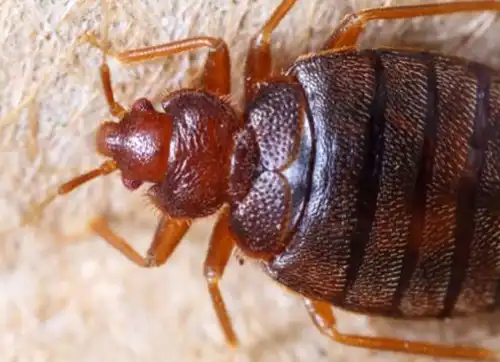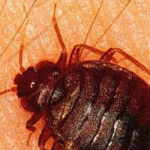
The sheer mention of bed bugs gives many people the creeps. The thought of them crawling on our skin and feeding on our blood while we’re asleep sends shivers down our spines! It doesn’t help that in recent years, the number of bed bug incidents has risen. So this begs the question, where do bed bugs come from and how do you get a bed bug infestation?
Let us break it down.
Bed Bug Travel Motivation
Bed bugs are blood-eating insects. They require blood to breed and blood meals to survive; but unlike mosquitoes, they can’t fly to get to their food. And, unlike ticks, they don’t have the convenience of living on a host. Bed bugs must find another way to get the food they need.
Where Do Bed Bugs Come From?
Bed bugs can be found all over the world and dwell almost exclusively with humans. While it is often assumed that they come from hotels and motels, the list of places bed bugs has been found is much more extensive, including the following:
|
|
How Do Bed Bugs Spread?
- Global Travel
Traveling is one of bed bugs favorite things to do, and they are amazing hitchhikers! While traveling on an airplane, train, bus or any other type of public transportation, it’s possible you could be exposed to bed bugs. Bed bugs can catch a ride in or on luggage, bags, purses or even clothing, allowing them to spread anywhere humans settle.Hotels and other overnight facilities are giant magnets for bed bugs due to the high amount of human traffic, providing bed bugs with countless opportunities to hitch a ride to an array of locations. If you spend the night in a hotel, motel, or resort, no matter how clean and well kept, be sure to do an inspection for bed bugs. Hotels are at just as much risk of obtaining a bed bug problem as they are of spreading one. Bed bugs in one room can easily move to other rooms through vents and walls, which creates serious problems. If you work in hospitality, be proactive and stay alert for bed bugs – this could help you avoid a public relations issue.
- Shared Living Spaces
Bed bug migration, especially in shared housing situations like condos, apartments and dormitories, is common since they can crawl over 100 feet in a night. They are known to go through tiny cracks in walls, through connected vents, or even in the seams of floor boards! Of course, they can also travel the old-fashioned way: simply crawling out a front door, down the hall and into another apartment. - Yard Sales
Everyone likes a bargain, but beware on your next cruise through a flea market or yard sale. Bed bugs are often introduced into a home on items already infested. If a piece of furniture is infested with bed bugs, especially pregnant females or their eggs, there is a high possibility that the new owner will have a bed bug problem on their hands. This includes used clothing, pre-owned mattresses, and other types of furniture. The best way to avoid this is to not buy used items– but if you do, check it for evidence of bed bugs before you take the items inside your home. Do not use furniture that appears to be infested. It will save you a big headache in the future!
-
House Guests
Hosting family and friends from out of town is something many of us do at some point. When guests come to stay at your home, they may unknowingly bring bed bugs with them. The bugs could come from your guest’s home or they could have been picked up while traveling. Because college dorms are also a haven for this pest, students returning home for holidays or the summer may bring home bed bugs hidden in their belongings. A good precaution is to wash all guest bedding on the hottest temperature once they have departed.
How to Tell If You Have Bed Bugs
Unfortunately, it isn’t that easy to spot bed bugs in your home, as they often dwell in areas out of plain sight, only vacating their hiding spots to grab a bite to eat from human hosts. They also tend to feed on you when you’re sleeping, which is not very conducive to catching their activity.
The first sign you might have a bed bug problem can be waking up to find bites on your body. However, it is important to understand that identifying bed bug bites can be a bit difficult as everyone reacts differently to them. To make things even more complicated, not everyone reacts to the bites.
Additional Bed Bug Evidence
Aside from discovering suspicious bites, there are also some signs that you might have a bed bug problem. They are:
- Dark/black stains around your mattress and bed frame, particularly around the joints and slats
- Small dark blood spots on your bedding
- Live bed bugs on furniture joints and skirting boards
Getting Rid of Bed Bugs
It is important to understand that bed bugs in your home or business is not something to be ashamed of; they are not a result of uncleanliness or lack of proper sanitation. They are hitchhikers and opportunists simply on the lookout for their next blood meal. Embarrassment should not prevent you from seeking help from bed bug professionals. This is a pest problem that will not go away unless treated properly.
If you have seen signs indicating bed bugs, reach out to a pest professional as soon as possible. Delaying treatment of an infestation results in a more difficult treatment process. Eliminating bed bugs can be tough, so consult with a professional who knows how to get rid of them properly.
If you are looking for assistance to control bed bugs in your home or businesses, contact the experts at Batzner today.
Need a pest control estimate?
We'll call you! Our representatives are fast and friendly.
Bed Bugs: Where They Come from and How You Get Them in Wisconsin
Serving Wisconsin




